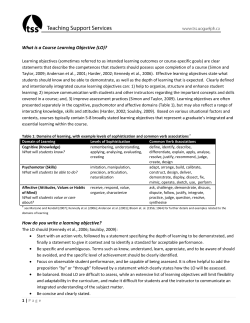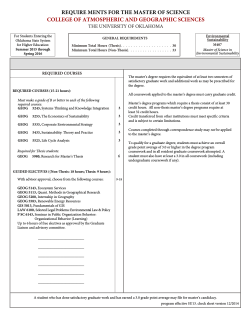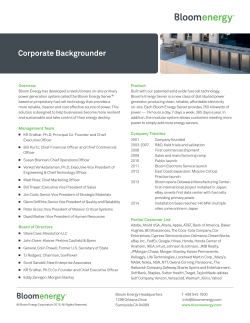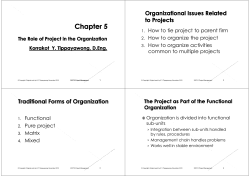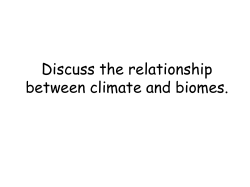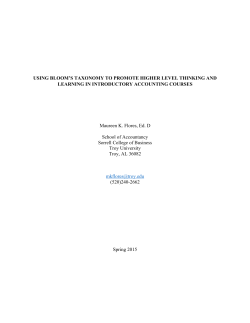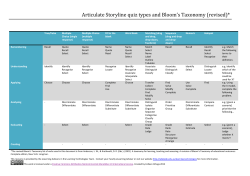
File
The Cultural Landscape, 11e (Rubenstein) Chapter 12 Services and Settlements 1) Residents of rural settlements are more likely than residents of urban settlements to work in A) agriculture. B) manufacturing. C) services. D) education. E) cities. Diff: 1 Bloom's Taxonomy: Comprehension Geog. Standard: 12 Section: 12 Services and Settlements Learning Outcome: 12.14: Explain the two dimensions of urbanization. 2) A place where farm buildings, homes, and churches are found close together is what kind of settlement? A) urban B) linear rural C) dispersed rural D) clustered rural E) primordial Diff: 1 1 Copyright © 2014 Pearson Education, Inc. Bloom's Taxonomy: Comprehension Geog. Standard: 12 Section: 12 Services and Settlements Learning Outcome: 12.11: Describe the difference between clustered and dispersed rural settlements. 3) In the United States about ________ of all jobs are in consumer services. A) 50 percent B) 10 percent C) 5 percent D) 75 percent E) 25 percent Diff: 1 Bloom's Taxonomy: Comprehension Geog. Standard: 12 Section: 12. 1 Three Types of Services Learning Outcome: 12. 1: Describe consumer services. 2 Copyright © 2014 Pearson Education, Inc. 4) Consumer services include A) educational, retail, wholesale, social, leisure, and hospitality jobs. B) educational, retail, wholesale, professional, and financial service jobs. C) educational, retail, wholesale, and financial service jobs. D) health and social, professional, and financial service jobs. E) wholesale, social, leisure, and information service jobs. Diff: 1 Bloom's Taxonomy: Knowledge Geog. Standard: 12 Section: 12. 1 Three Types of Services Learning Outcome: 12. 1: Describe consumer services. 5) In the United States educational services account for about ________ of jobs. A) 10 percent B) 2 percent C) 1 percent D) 35 percent E) 25 percent Diff: 1 Bloom's Taxonomy: Knowledge Geog. Standard: 12 Section: 12. 1 Three Types of Services 3 Copyright © 2014 Pearson Education, Inc. Learning Outcome: 12. 1: Describe consumer services. 6) Most people in the world live in what type of settlement? A) clustered rural B) dispersed rural C) urban settlement D) agricultural E) primordial Diff: 1 Bloom's Taxonomy: Comprehension Geog. Standard: 12 Section: 12. 1 Three Types of Services Learning Outcome: 12.14: Explain the two dimensions of urbanization. 4 Copyright © 2014 Pearson Education, Inc. 7) Which of the following is not primarily a consumer service? A) transportation services B) retail and wholesale services C) education services D) health services E) hospitality services Diff: 1 Bloom's Taxonomy: Knowledge Geog. Standard: 11 Section: 12. 1 Three Types of Services Learning Outcome: 12. 1: Describe consumer services. ! 8) This map of the percentage of GDP from services indicates that services account for between 60 and 69 percent of GDP in 5 Copyright © 2014 Pearson Education, Inc. A) Russia, Australia, and Germany. B) South Africa, Namibia, and Mexico. C) Mexico, Canada, and Russia. D) Brazil, Mexico, and Yemen. E) Brazil, the United States, and Canada. Diff: 2 Bloom's Taxonomy: Analysis Geog. Standard: 3 Section: 12. 1 Three Types of Services Learning Outcome: 12. 1: Describe consumer services. Global Sci LO: 3. Read and Interpret Graphs and Data ! 9) This map indicates that services account for less than 60 percent of GDP in A) South Africa and India. 6 Copyright © 2014 Pearson Education, Inc. B) Colombia and Venezuela. C) Australia and India. D) China and India. E) Brazil, Russia, and Namibia. Diff: 2 Bloom's Taxonomy: Analysis Geog. Standard: 3 Section: 12. 1 Three Types of Services Learning Outcome: 12. 1: Describe consumer services. Global Sci LO: 3. Read and Interpret Graphs and Data 10) The area surrounding a service from which customers are attracted is the A) hinterland. B) range. C) threshold. D) median. E) meridian Diff: 1 Bloom's Taxonomy: Knowledge Geog. Standard: 11 Section: 12. 3 Central Place Theory Learning Outcome: 12. 4: Explain the concept of market area. 7 Copyright © 2014 Pearson Education, Inc. 8 Copyright © 2014 Pearson Education, Inc. 11) The maximum distance people are willing to travel for a service is A) hinterland. B) range. C) threshold. D) median. E) meridian Diff: 1 Bloom's Taxonomy: Knowledge Geog. Standard: 11 Section: 12. 3 Central Place Theory Learning Outcome: 12. 5: Explain the concepts of range and threshold. 12) A central place is a A) hinterland. B) market center. C) range of a good. D) rank-size distribution. E) hexagonal settlement. Diff: 1 Bloom's Taxonomy: Knowledge Geog. Standard: 11 Section: 12. 3 Central Place Theory 9 Copyright © 2014 Pearson Education, Inc. Learning Outcome: 12. 4: Explain the concept of market area. 10 Copyright © 2014 Pearson Education, Inc. ! Daily Urban Systems 13) This map indicates that A) urban systems are only available during the daytime in rural areas. B) daily urban systems tend to cover much larger areas in western states. C) daily urban systems tend to cover much smaller areas in western states. D) daily urban systems in western states are about the same size as those in eastern states. E) western states do not tend to have daily urban systems. Diff: 2 Bloom's Taxonomy: Analysis Geog. Standard: 3 Section: 12. 3 Central Place Theory Learning Outcome: 12. 7: Explain how to use threshold and range to find the optimal location 11 Copyright © 2014 Pearson Education, Inc. for a service. Global Sci LO: 3. Read and Interpret Graphs and Data ! 14) This map of central place theory in North Dakota indicates that the populations of A) Rugby and Granville are smaller than Towner. B) Granville and Towner are smaller than Rugby. C) New Town and Stanley are larger than Minot. D) Bottineau is smaller than Lansford. E) Lansford is larger than Minot. Diff: 2 Bloom's Taxonomy: Analysis Geog. Standard: 3 Section: 12. 3 Central Place Theory Learning Outcome: 12. 5: Explain the concepts of range and threshold. 12 Copyright © 2014 Pearson Education, Inc. Global Sci LO: 3. Read and Interpret Graphs and Data ! 15) This map of central place theory in North Dakota indicates that A) New Town is less than 10 miles from Parshall, and Parshall is less than 10 miles from Makoti. B) New Town is less than 20 miles from Parshall, and Parshall is less than 20 miles from Makoti. C) New Town is less than 30 miles from Parshall, and Parshall is less than 30 miles from Makoti. D) Minot is about 100 miles west of Rugby, and Stanley is about 100 miles west of Minot. E) Minot is about 120 miles west of Rugby, and Stanley is about 120 miles west of Minot. Diff: 2 Bloom's Taxonomy: Analysis Geog. Standard: 3 Section: 12. 3 Central Place Theory Learning Outcome: 12. 5: Explain the concepts of range and threshold. Global Sci LO: 3. Read and Interpret Graphs and Data 13 Copyright © 2014 Pearson Education, Inc. 16) If a country's largest city has 1,000,000 inhabitants and the second largest city has 200,000 inhabitants, the country follows what distribution? A) central place B) economic base C) primate city D) rank-size E) equidistant Diff: 1 Bloom's Taxonomy: Comprehension Geog. Standard: 12 Section: 12. 4 Hierarchy of Consumer Services Learning Outcome: 12. 6: Explain the distribution of different sized settlements. 14 Copyright © 2014 Pearson Education, Inc. 17) The hierarchical listing of settlements by size is known as the A) primate city. B) economic base. C) gravity model. D) rank-size rule. E) nesting of settlements. Diff: 1 Bloom's Taxonomy: Comprehension Geog. Standard: 12 Section: 12. 4 Hierarchy of Consumer Services Learning Outcome: 12. 6: Explain the distribution of different sized settlements. 18) A primate city is A) a city with political, economic, and cultural functions. B) at least twice as large as the next smaller city. C) the seat of a Roman Catholic diocese. D) a rapidly growing city. E) the center of gravity for a hinterland. Diff: 1 Bloom's Taxonomy: Knowledge Geog. Standard: 12 Section: 12. 4 Hierarchy of Consumer Services 15 Copyright © 2014 Pearson Education, Inc. Learning Outcome: 12. 6: Explain the distribution of different sized settlements. 19) If a country follows the rank-size rule, if the largest city has 1,000,000 inhabitants, how many people live in the fifth largest city? A) 50,000 B) 100,000 C) 200,000 D) 500,000 E) 5,000,000 Diff: 2 Bloom's Taxonomy: Application Geog. Standard: 12 Section: 12. 4 Hierarchy of Consumer Services Learning Outcome: 12. 6: Explain the distribution of different sized settlements. 16 Copyright © 2014 Pearson Education, Inc. 20) The minimum number of people needed to support a service is called the A) hinterland. B) range. C) threshold. D) median. E) meridian. Diff: 1 Bloom's Taxonomy: Comprehension Geog. Standard: 11 Section: 12. 5 Market Area Analysis 21) The gravity model predicts that the optimal location of a service is A) directly related to the number of people and services in the area and inversely related to the lengths of highways and railways that access it. B) directly related to the range in the area and inversely related to the hinterland. C) directly related to the number of people in the area and inversely related to the distance people must travel to access it. D) directly related to the median of people in the area and inversely related to the meridian of people who travel to access it. E) directly related to the distance people must travel and inversely related to the number of people in the area. Diff: 1 Bloom's Taxonomy: Comprehension Geog. Standard: 11 Section: 12. 5 Market Area Analysis 17 Copyright © 2014 Pearson Education, Inc. Learning Outcome: 12. 4: Explain the concept of market area. 22) The potential use of a service at a location is related directly to population and inversely to distance in the A) gravity model. B) population model. C) distance decay. D) gravitational model. E) threshold model. Diff: 1 Bloom's Taxonomy: Knowledge Geog. Standard: 11 Section: 12. 5 Market Area Analysis Learning Outcome: 12. 4: Explain the concept of market area. 18 Copyright © 2014 Pearson Education, Inc. 23) Periodic markets are likely to feature A) vendors who move from town to town. B) prices that change on a seasonal schedule. C) large sales after the holiday season. D) a daily offering of business services throughout the year. E) consumer goods that change periodically in the central business district. Diff: 1 Bloom's Taxonomy: Comprehension Geog. Standard: 11 Section: 12. 5 Market Area Analysis Learning Outcome: 12. 9: Explain the two types of business services in developing countries. 24) Central Place Theory predicts larger settlements are A) more numerous and closer together. B) more numerous and farther apart. C) less numerous and farther apart. D) less numerous and closer together. E) more numerous. Diff: 1 Bloom's Taxonomy: Comprehension Geog. Standard: 12 Section: 12. 5 Market Area Analysis Learning Outcome: 12. 6: Explain the distribution of different sized settlements. 19 Copyright © 2014 Pearson Education, Inc. 25) In a linear community, we can deduce that the best location for a service is the A) hinterland. B) range. C) threshold. D) median. E) meridian. Diff: 2 Bloom's Taxonomy: Application Geog. Standard: 11 Section: 12. 5 Market Area Analysis Learning Outcome: 12. 7: Explain how to use threshold and range to find the optimal location for a service. 20 Copyright © 2014 Pearson Education, Inc. 26) Global cities are identified and ranked by a combination of A) economic, political, cultural, and infrastructure factors. B) economic, service, industrial, and infrastructure factors. C) central place theory and gravity models. D) hinterland models. E) political and infrastructure factors. Diff: 1 Bloom's Taxonomy: Comprehension Geog. Standard: 12 Section: 12. 6 Hierarchy of Business Services Learning Outcome: 12. 6: Explain the distribution of different sized settlements. 27) The geometric pattern which geographers use to represent market areas is A) a circle. B) a hexagon. C) a square. D) a pentagon. E) an octagon. Diff: 1 Bloom's Taxonomy: Knowledge Geog. Standard: 11 Section: 12. 6 Hierarchy of Business Services 21 Copyright © 2014 Pearson Education, Inc. Learning Outcome: 12. 4: Explain the concept of market area. 28) A ________ is an example of a settlement that specializes in public services. A) state capital B) hospital C) large casino complex D) shopping mall E) retirement community Diff: 1 Bloom's Taxonomy: Knowledge Geog. Standard: 11 Section: 12. 6 Hierarchy of Business Services Learning Outcome: 12. 8: Describe the four levels of settlements based on their business services. ! 22 Copyright © 2014 Pearson Education, Inc. 29) An analysis of this map of global cities indicates that A) Chicago is an alpha-ranked world city. B) New York City is a beta-ranked world city. C) Sao Paulo is a beta-ranked world city. D) Lima, Peru, is an alpha-ranked world city. E) Cairo is an alpha-ranked world city. Diff: 2 Bloom's Taxonomy: Analysis Geog. Standard: 3 Section: 12. 6 Hierarchy of Business Services Learning Outcome: 12. 8: Describe the four levels of settlements based on their business services. Global Sci LO: 3. Read and Interpret Graphs and Data ! 23 Copyright © 2014 Pearson Education, Inc. 30) An analysis of this map of global cities indicates that A) Chicago is ranked above Sao Paulo. B) New York City is ranked below London. C) Sao Paulo is ranked above Chicago. D) Moscow is ranked above Sao Paulo. E) Cairo is ranked above Beijing. Diff: 2 Bloom's Taxonomy: Analysis Geog. Standard: 3 Section: 12. 6 Hierarchy of Business Services Learning Outcome: 12. 8: Describe the four levels of settlements based on their business services. Global Sci LO: 3. Read and Interpret Graphs and Data 24 Copyright © 2014 Pearson Education, Inc. ! 31) An analysis of this U.S. map indicates that A) Indianapolis is Gamma-ranked and Denver is Beta-ranked. B) Indianapolis is Beta-ranked and Denver is Alpha-ranked. C) Indianapolis is Gamma-ranked and Denver is Alpha-ranked. D) San Diego is Gamma-ranked and Denver is Alpha-ranked. E) Indianapolis is Gamma-ranked and Detroit is Gamma-ranked. Diff: 2 Bloom's Taxonomy: Analysis Geog. Standard: 3 Section: 12. 6 Hierarchy of Business Services Learning Outcome: 12. 8: Describe the four levels of settlements based on their business 25 Copyright © 2014 Pearson Education, Inc. services. Global Sci LO: 3. Read and Interpret Graphs and Data ! 32) An analysis of this U.S. map indicates that A) Phoenix is Gamma-ranked and San Diego is Beta-ranked. B) Phoenix is ranked above Denver. C) New York City is ranked below Chicago. D) New York City is Beta- and Gamma-ranked. E) San Diego is Gamma-ranked and Phoenix is Beta-ranked. Diff: 2 Bloom's Taxonomy: Analysis Geog. Standard: 3 26 Copyright © 2014 Pearson Education, Inc. Section: 12. 6 Hierarchy of Business Services Learning Outcome: 12. 8: Describe the four levels of settlements based on their business services. Global Sci LO: 3. Read and Interpret Graphs and Data 27 Copyright © 2014 Pearson Education, Inc. 33) The attraction of the outsourced "call center" industry to locate in India can best be explained by A) low wages and the wide use of English. B) low wages and geographic situational factors. C) the wide use of English and the large number of working students. D) Indian students' ability to work at night and geographic situational factors. E) low wages and desperate conditions. Diff: 1 Bloom's Taxonomy: Comprehension Geog. Standard: 11 Section: 12. 7 Business Services in Developing Countries Learning Outcome: 12. 9: Explain the two types of business services in developing countries. 34) The attraction of the outsourced "offshore banking" industry can best be explained by A) bank secrecy laws and the avoidance of paying taxes in other countries. B) low wages, bank secrecy laws, and the avoidance of paying taxes in other countries. C) the wide use of English and the large number of working students in the Cayman Islands. D) the avoidance of paying taxes in other countries and the hiding of prostitution and capital crimes. E) corporate greed and the hiding of unethical and illegal behaviors, including prostitution. Diff: 1 Bloom's Taxonomy: Comprehension Geog. Standard: 11 Section: 12. 7 Business Services in Developing Countries 28 Copyright © 2014 Pearson Education, Inc. Learning Outcome: 12. 9: Explain the two types of business services in developing countries. 35) World cities are defined by A) the number and type of business services found there. B) their total population. C) their location relative to other cities. D) the number of museums, monuments, and universities they offer. E) their total population in relation to major capital cities. Diff: 1 Bloom's Taxonomy: Knowledge Geog. Standard: 11 Section: 12. 7 Business Services in Developing Countries Learning Outcome: 12. 8: Describe the four levels of settlements based on their business services. 29 Copyright © 2014 Pearson Education, Inc. 36) LDCs specialize in what two types of global business services? A) management consulting and staff training B) regional command and control centers C) biotechnology and medical research D) entertainment and recreation E) offshore financial and back office Diff: 1 Bloom's Taxonomy: Comprehension Geog. Standard: 11 Section: 12. 7 Business Services in Developing Countries Learning Outcome: 12. 9: Explain the two types of business services in developing countries. 37) Two major benefits many LDCs offer in terms of global financial services are A) tax breaks and privacy. B) command and control centers and low wages. C) dependent centers and tax breaks. D) command and control centers and dependent centers. E) privacy and low wages. Diff: 1 Bloom's Taxonomy: Comprehension Geog. Standard: 11 Section: 12. 7 Business Services in Developing Countries 30 Copyright © 2014 Pearson Education, Inc. Learning Outcome: 12. 9: Explain the two types of business services in developing countries. 38) What factors determine where back office services will locate in LDCs? A) political stability and cultural diversity B) market threshold and service range C) military training and proximity to command and control centers D) low wage rates and workers who can speak English E) tax advantages and bank secrecy laws Diff: 1 Bloom's Taxonomy: Comprehension Geog. Standard: 11 Section: 12. 7 Business Services in Developing Countries Learning Outcome: 12. 9: Explain the two types of business services in developing countries. 31 Copyright © 2014 Pearson Education, Inc. 39) Back-office functions are also called A) business-process offshore banking. B) market threshold outsourcing. C) command and control centering. D) business-process outsourcing. E) tax advantage outsourcing. Diff: 1 Bloom's Taxonomy: Comprehension Geog. Standard: 11 Section: 12. 7 Business Services in Developing Countries Learning Outcome: 12. 9: Explain the two types of business services in developing countries. 40) What technical development has allowed back-office functions to relocate to LDCs? A) telecommunications B) standard time zones C) improved public health services in tropical countries D) financial market reforms E) effective trademark enforcement Diff: 1 Bloom's Taxonomy: Comprehension Geog. Standard: 11 Section: 12. 7 Business Services in Developing Countries 32 Copyright © 2014 Pearson Education, Inc. Learning Outcome: 12. 9: Explain the two types of business services in developing countries. 33 Copyright © 2014 Pearson Education, Inc. ! 41) This map of offshore financial centers indicates that A) most are concentrated in South America. B) many are concentrated in the United States. C) many are concentrated in the eastern Caribbean. D) many are concentrated in East Asia. E) there are more offshore banking centers in Europe than in the Caribbean. Diff: 2 Bloom's Taxonomy: Analysis Geog. Standard: 3 Section: 12. 7 Business Services in Developing Countries Learning Outcome: 12. 9: Explain the two types of business services in developing countries. Global Sci LO: 3. Read and Interpret Graphs and Data 34 Copyright © 2014 Pearson Education, Inc. ! 42) This map of offshore financial centers indicates that A) Gibraltar is an independent microstate that is also an offshore banking center. B) New Zealand is an independent microstate that is also an offshore banking center. C) Mauritius is an independent microstate that is also an offshore banking center. D) Mauritius is a dependency that is also an offshore banking center. E) there are more offshore banking centers in Asia than in the Caribbean. Diff: 2 Bloom's Taxonomy: Analysis Geog. Standard: 3 Section: 12. 7 Business Services in Developing Countries Learning Outcome: 12. 9: Explain the two types of business services in developing countries. Global Sci LO: 3. Read and Interpret Graphs and Data 35 Copyright © 2014 Pearson Education, Inc. 43) Which of the following is most likely a basic economic activity? A) video rental store B) grocery store C) gas station D) steel mill E) travel agency Diff: 1 Bloom's Taxonomy: Comprehension Geog. Standard: 11 Section: 12. 8 Economic Base of Settlements Learning Outcome: 12.10: Explain the concept of economic base. 36 Copyright © 2014 Pearson Education, Inc. 44) A firm that sells its products primarily to consumers outside its settlement is a A) basic industry. B) functional classification. C) nonbasic industry. D) primate city. E) consumer service. Diff: 1 Bloom's Taxonomy: Comprehension Geog. Standard: 11 Section: 12. 8 Economic Base of Settlements Learning Outcome: 12.10: Explain the concept of economic base. 45) One of the most important basic activities in the southern Great Lakes region is A) manufacturing of durable goods. B) manufacturing of textiles. C) entertainment and recreation facilities. D) government and education. E) high technology services. Diff: 1 Bloom's Taxonomy: Comprehension Geog. Standard: 11 Section: 12. 8 Economic Base of Settlements 37 Copyright © 2014 Pearson Education, Inc. Learning Outcome: 12.10: Explain the concept of economic base. 46) Richard Florida's research identified a relationship between the distribution of A) talent and diversity. B) central places. C) talent and economic prosperity. D) rural and urban settlements. E) business and consumer services. Diff: 1 Bloom's Taxonomy: Knowledge Geog. Standard: 11 Section: 12. 8 Economic Base of Settlements Learning Outcome: 12.10: Explain the concept of economic base. 38 Copyright © 2014 Pearson Education, Inc. 47) Attracting a new basic industry is important to a community, primarily because it A) changes the community's functional classification. B) stimulates new nonbasic industries. C) disrupts the central place hierarchy. D) changes the nation's rank-size distribution of settlements. E) replaces obsolete industry. Diff: 2 Bloom's Taxonomy: Application Geog. Standard: 11 Section: 12. 8 Economic Base of Settlements Learning Outcome: 12.10: Explain the concept of economic base. 39 Copyright © 2014 Pearson Education, Inc. ! 48) According to these "geography of talent" maps, A) scientists in the western states are partly concentrated in and around Seattle, Denver, and San Francisco. B) scientists in the western states are mainly concentrated in Arizona, New Mexico, Montana, Wyoming, and Nevada. C) in the Midwest, the percentage of scientists in Chicago is greater than the percentage in St. Louis. D) scientists in the eastern states are mainly concentrated in South Carolina and West Virginia. E) there are almost no scientists in California or Arizona. 40 Copyright © 2014 Pearson Education, Inc. Diff: 2 Bloom's Taxonomy: Analysis Geog. Standard: 3 Section: 12. 8 Economic Base of Settlements Learning Outcome: 12.10: Explain the concept of economic base. Global Sci LO: 3. Read and Interpret Graphs and Data ! 49) According to these "geography of talent" maps, 41 Copyright © 2014 Pearson Education, Inc. A) the proportion of professionals in the Minneapolis-St. Paul area is greater than the proportion in the Chicago area. B) the proportion of professionals in the Phoenix area is greater than the proportion in the Denver area. C) the proportion of professionals in the Phoenix and San Diego areas is greater than the proportion in the Denver and St. Louis areas. D) the proportion of professionals in the Las Vegas area is greater than the proportion in the Milwaukee area. E) the proportion of professionals in the Miami area is greater than the proportion in the Washington, D.C., area. Diff: 2 Bloom's Taxonomy: Analysis Geog. Standard: 3 Section: 12. 8 Economic Base of Settlements Learning Outcome: 12.10: Explain the concept of economic base. Global Sci LO: 3. Read and Interpret Graphs and Data 42 Copyright © 2014 Pearson Education, Inc. ! 50) According to these "geography of talent" maps, A) the share of university graduates in the Atlanta area is greater than the share in the Memphis, Los Angeles, Miami, and Chicago areas. B) the share of university graduates in the Atlanta area is greater than the share in the Memphis, Los Angeles, Miami, Boston, San Francisco, Washington, D.C., and Chicago areas. C) the share of university graduates in the Los Angeles area is greater than the share in the Memphis, Boston, and Chicago areas. D) the share of university graduates in the Los Angeles area is greater than the share in the Washington, D.C. area. E) the share of university graduates in the Dallas area is greater than the share in the Boston and 43 Copyright © 2014 Pearson Education, Inc. Atlanta areas. Diff: 2 Bloom's Taxonomy: Analysis Geog. Standard: 3 Section: 12. 8 Economic Base of Settlements Learning Outcome: 12.10: Explain the concept of economic base. Global Sci LO: 3. Read and Interpret Graphs and Data 51) The French long-lot system was developed primarily because of A) collective land ownership. B) common grazing land. C) inheritance laws. D) need for access to a river. E) long distance between farms. Diff: 1 Bloom's Taxonomy: Knowledge Geog. Standard: 12 Section: 12. 9 Services in Rural Settlements Learning Outcome: 12.11: Describe the difference between clustered and dispersed rural settlements. 52) The most significant impact that Great Britain's enclosure movement made on the rural landscape was to A) produce more of a dispersed rural settlement pattern. 44 Copyright © 2014 Pearson Education, Inc. B) reinforce the traditional clustered rural settlement pattern. C) discourage urbanization. D) increase the rural population. E) improve transportation. Diff: 1 Bloom's Taxonomy: Comprehension Geog. Standard: 12 Section: 12. 9 Services in Rural Settlements Learning Outcome: 12.11: Describe the difference between clustered and dispersed rural settlements. 53) Clustered rural settlements were most common in which region of colonial America? A) Middle Atlantic B) New England C) Southeast D) Coastal margins E) West Diff: 1 Bloom's Taxonomy: Knowledge Geog. Standard: 12 Section: 12. 9 Services in Rural Settlements Learning Outcome: 12.11: Describe the difference between clustered and dispersed rural settlements. 45 Copyright © 2014 Pearson Education, Inc. 46 Copyright © 2014 Pearson Education, Inc. 54) The most prominent structure in the ancient city of Ur was the stepped temple called the ________, which was built about 4,000 years ago. A) pyramid B) Great Pyramid C) Ziggurat D) cathedral E) Parthenon Diff: 1 Bloom's Taxonomy: Comprehension Geog. Standard: 11 Section: 12.10a Urbanization Learning Outcome: 12.13: Identify important prehistoric, ancient, and medieval urban settlements. 55) The most prominent structure in the ancient city of Athens was the ________, which still overlooks the city. A) pyramid B) Great Pyramid C) Parthenon D) cathedral E) Ziggurat Diff: 1 Bloom's Taxonomy: Comprehension Geog. Standard: 11 47 Copyright © 2014 Pearson Education, Inc. Section: 12.10a Urbanization Learning Outcome: 12.13: Identify important prehistoric, ancient, and medieval urban settlements. 56) Because of its centrality in an ancient communications network, we still have the old saying "All roads lead to ________." A) Paris B) Athens C) Rome D) Genoa E) London Diff: 1 Bloom's Taxonomy: Comprehension Geog. Standard: 11 Section: 12.10a Urbanization Learning Outcome: 12.13: Identify important prehistoric, ancient, and medieval urban settlements. 48 Copyright © 2014 Pearson Education, Inc. 57) Which of the following is considered to be a hearth of urban settlement? A) Rome B) North Africa C) southern Africa D) Australia E) Mesopotamia Diff: 1 Bloom's Taxonomy: Comprehension Geog. Standard: 12 Section: 12.10a Urbanization Learning Outcome: 12.13: Identify important prehistoric, ancient, and medieval urban settlements. 58) Heterogeneity is more a characteristic of A) suburban and rural communities. B) ancient urban centers than modern urban centers. C) manufacturing centers and rural populations. D) rural and urban centers. E) urban centers than rural communities. Diff: 1 Bloom's Taxonomy: Comprehension Geog. Standard: 12 Section: 12.10a Urbanization 49 Copyright © 2014 Pearson Education, Inc. Learning Outcome: 12.14: Explain the two dimensions of urbanization. 59) Urban residents are generally more tolerant of ________ than are the residents of rural communities, but residents of urban settlements often feel that they are surrounded by people who are indifferent and reserved. A) discrimination B) political insiders C) tax shelters D) uniform social behavior E) diverse social behavior Diff: 1 Bloom's Taxonomy: Comprehension Geog. Standard: 12 Section: 12.10a Urbanization Learning Outcome: 12.14: Explain the two dimensions of urbanization. 50 Copyright © 2014 Pearson Education, Inc. 60) Urbanization can be analyzed by looking at the increase in the ________ of people living in cities. A) number and percentage B) number and homogeneity C) percentage and density D) density and heterogeneity E) size and density Diff: 1 Bloom's Taxonomy: Comprehension Geog. Standard: 12 Section: 12.10a Urbanization Learning Outcome: 12.14: Explain the two dimensions of urbanization. 61) Which statement best describes the relationship between urbanization and the Industrial Revolution in Europe? A) Urbanization ultimately promoted the Industrial Revolution. B) The Industrial Revolution ultimately promoted urbanization. C) Urbanization preceded the Industrial Revolution by thousands of years. D) Urbanization preceded the Industrial Revolution by hundreds of years. E) Urbanization and the Industrial Revolution are largely unrelated. Diff: 1 Bloom's Taxonomy: Comprehension Geog. Standard: 11 51 Copyright © 2014 Pearson Education, Inc. Section: 12.10a Urbanization Learning Outcome: 12.14: Explain the two dimensions of urbanization. 62) Higher social heterogeneity in urban settlements means that A) the people you know socially are probably the same ones you see at work. B) the people are more alike than in rural settlements. C) people compete for limited space. D) there are many different kinds of people in cities. E) people play a specialized role in the urban economy. Diff: 1 Bloom's Taxonomy: Comprehension Geog. Standard: 12 Section: 12.10a Urbanization Learning Outcome: 12.14: Explain the two dimensions of urbanization. 52 Copyright © 2014 Pearson Education, Inc. 63) The most significant anticipated benefit of the enclosure movement was to A) destroy traditional village life. B) promote agricultural efficiency. C) replace abandoned villages with new farmsteads. D) discourage urbanization. E) create an aristocracy. Diff: 1 Bloom's Taxonomy: Comprehension Geog. Standard: 12 Section: 12.10a Urbanization Learning Outcome: 12.11: Describe the difference between clustered and dispersed rural settlements. 64) The fall of the Roman Empire in the fifth century A.D. brought about what change in urban settlements? A) development of city-states B) rapid urbanization C) reduction in urban population D) revival of urban life E) increased trade Diff: 1 Bloom's Taxonomy: Knowledge Geog. Standard: 12 53 Copyright © 2014 Pearson Education, Inc. Section: 12.10a Urbanization Learning Outcome: 12.13: Identify important prehistoric, ancient, and medieval urban settlements. 65) Typical medieval European urban settlements were characterized by the A) dispersal of palaces, churches, and other important buildings throughout the town. B) placement of buildings around a central market square. C) demolition of ancient walls surrounding the town. D) provision of parks and open space surrounding important churches. E) broad avenues in residential districts. Diff: 1 Bloom's Taxonomy: Comprehension Geog. Standard: 12 Section: 12.10a Urbanization Learning Outcome: 12.13: Identify important prehistoric, ancient, and medieval urban settlements. 54 Copyright © 2014 Pearson Education, Inc. 66) The city-state is an example of A) an early form of rural settlement. B) a state dominated by its major city. C) a functional region. D) a local government of the Roman Empire. E) diffuse political functions. Diff: 1 Bloom's Taxonomy: Knowledge Geog. Standard: 12 Section: 12.10a Urbanization Learning Outcome: 12.13: Identify important prehistoric, ancient, and medieval urban settlements. ! 67) This map of early urban settlements indicates that by 1 A.D. A) Beijing was smaller than London. 55 Copyright © 2014 Pearson Education, Inc. B) Tokyo was smaller than London. C) Rome was one of the largest cities in the world. D) London was the largest city in Europe. E) Constantinople was still a minor settlement. Diff: 2 Bloom's Taxonomy: Analysis Geog. Standard: 11 Section: 12.10a Urbanization Learning Outcome: 12.13: Identify important prehistoric, ancient, and medieval urban settlements. Global Sci LO: 3. Read and Interpret Graphs and Data ! 68) This map of early urban settlements indicates that by 1 A.D. A) Beijing was still a small settlement. B) Rome was the largest city in the world. C) Tokyo was one of the largest cities in the world. 56 Copyright © 2014 Pearson Education, Inc. D) London was the largest city in the world. E) Constantinople was still a small settlement. Diff: 2 Bloom's Taxonomy: Analysis Geog. Standard: 11 Section: 12.10a Urbanization Learning Outcome: 12.13: Identify important prehistoric, ancient, and medieval urban settlements. Global Sci LO: 3. Read and Interpret Graphs and Data 57 Copyright © 2014 Pearson Education, Inc. ! 69) This map of the percentage living in urban settlements indicates that the following countries are more than 75 percent urban: A) South Africa, Kenya, Tanzania, Namibia, and Libya. B) Mexico, Peru, Bolivia, China, India, and Australia. C) Brazil, Argentina, Chile, Mexico, and Libya. D) India, China, Russia, Australia, and Spain. E) France, Germany, Romania, Russia, and Bulgaria. Diff: 2 Bloom's Taxonomy: Analysis Geog. Standard: 11 Section: 12.10a Urbanization Learning Outcome: 12.14: Explain the two dimensions of urbanization. Global Sci LO: 3. Read and Interpret Graphs and Data 58 Copyright © 2014 Pearson Education, Inc. ! 70) This map of the percentage living in urban settlements indicates that in the following countries, less than half of the people live in urban areas: A) South Africa, Kenya, Tanzania, Namibia, and Libya. B) Mexico, India, China, Saudi Arabia, and Libya. C) Niger, Chad, the Central African Republic, Kenya, Tanzania, and China. D) Niger, Chad, the Central African Republic, India, Australia, and South Africa. E) France, Germany, Romania, Russia, and Bulgaria. Diff: 2 Bloom's Taxonomy: Analysis Geog. Standard: 11 Section: 12.10a Urbanization Learning Outcome: 12.14: Explain the two dimensions of urbanization. Global Sci LO: 3. Read and Interpret Graphs and Data 59 Copyright © 2014 Pearson Education, Inc. ! 71) The map of major urban settlements indicates that the vast majority of cities with more than two million residents A) are located in North America and Europe. B) that are in Asia are situated on or near the coasts. C) that are in South America are on or near the coasts. D) that are in South America, Asia, and North America are on or near the coasts. E) are located in South Asia and Australia. Diff: 2 Bloom's Taxonomy: Analysis Geog. Standard: 11 Section: 12.10a Urbanization Learning Outcome: 12.14: Explain the two dimensions of urbanization. Global Sci LO: 3. Read and Interpret Graphs and Data 60 Copyright © 2014 Pearson Education, Inc. TRUE OR FALSE SECTION 72) Settlements hold nearly all the Earth's population but cover only about 1 percent of its surface. Answer: Diff: 1 Bloom's Taxonomy: Knowledge Geog. Standard: 12 Section: 12 Services and Settlements Learning Outcome: 12.14: Explain the two dimensions of urbanization. 61 Copyright © 2014 Pearson Education, Inc. 73) Linear settlement patterns were brought to North America by the French. Answer: Diff: 1 Bloom's Taxonomy: Comprehension Geog. Standard: 12 Section: 12 Services and Settlements Learning Outcome: 12.11: Describe the difference between clustered and dispersed rural settlements. 74) The colonial New England rural settlement pattern was clustered. Answer: Diff: 1 Bloom's Taxonomy: Knowledge Geog. Standard: 12 Section: 12 Services and Settlements Learning Outcome: 12.11: Describe the difference between clustered and dispersed rural settlements. 75) In recent decades growth in employment in the United States has come from the primary and secondary sectors, while the tertiary sector has declined. Answer: Diff: 1 Bloom's Taxonomy: Comprehension Geog. Standard: 11 Section: 12. 2 Rising and Falling Service Employment Learning Outcome: 12.10: Explain the concept of economic base. 62 Copyright © 2014 Pearson Education, Inc. 76) In recent decades the tertiary sector in Western Europe has declined. Answer: Diff: 1 Bloom's Taxonomy: Comprehension Geog. Standard: 11 Section: 12. 2 Rising and Falling Service Employment Learning Outcome: 12.10: Explain the concept of economic base. 77) People who live in rural settlements are more likely to engage in secondary sector economic activities. Answer: Diff: 1 Bloom's Taxonomy: Comprehension Geog. Standard: 12 Section: 12. 2 Rising and Falling Service Employment Learning Outcome: 12.10: Explain the concept of economic base. 63 Copyright © 2014 Pearson Education, Inc. 78) When determining the market threshold, there is no need to determine what is being sold. Answer: Diff: 1 Bloom's Taxonomy: Comprehension Geog. Standard: 11 Section: 12. 5 Market Area Analysis Learning Outcome: 12. 5: Explain the concepts of range and threshold. 79) The threshold of a service is the maximum distance that most of the customers are willing to travel. Answer: Diff: 1 Bloom's Taxonomy: Knowledge Geog. Standard: 11 Section: 12. 5 Market Area Analysis Learning Outcome: 12. 5: Explain the concepts of range and threshold. 80) Copenhagen and London are primate cities even though they are located in more developed countries. Answer: Diff: 1 Bloom's Taxonomy: Comprehension Geog. Standard: 12 Section: 12. 6 Hierarchy of Business Services Learning Outcome: 12. 9: Explain the two types of business services in developing countries. 64 Copyright © 2014 Pearson Education, Inc. 81) Transportation and communication improvements have served to reduce the need for the clustering of services in world cities. Answer: Diff: 1 Bloom's Taxonomy: Comprehension Geog. Standard: 11 Section: 12. 6 Hierarchy of Business Services Learning Outcome: 12. 8: Describe the four levels of settlements based on their business services. 82) According to the rank-size rule, if the largest city in a country contains 1,000,000 inhabitants, the fifth largest city should contain 200,000 inhabitants. Answer: Diff: 2 Bloom's Taxonomy: Application Geog. Standard: 12 Section: 12. 6 Hierarchy of Business Services Learning Outcome: 12. 6: Explain the distribution of different sized settlements. 65 Copyright © 2014 Pearson Education, Inc. 83) A community's economic structure depends initially on its basic industries. Answer: Diff: 2 Bloom's Taxonomy: Application Geog. Standard: 11 Section: 12. 8 Economic Base of Settlements Learning Outcome: 12.10: Explain the concept of economic base. 84) The frequency of periodic markets varies by culture. Answer: Diff: 1 Bloom's Taxonomy: Knowledge Geog. Standard: 11 Section: 12. 9 Services in Rural Settlements Learning Outcome: 12. 7: Explain how to use threshold and range to find the optimal location for a service. 85) Rapid urbanization continues today in the more developed countries. Answer: Diff: 1 Bloom's Taxonomy: Comprehension Geog. Standard: 12 Section: 12.10a Urbanization Learning Outcome: 12.14: Explain the two dimensions of urbanization. 86) As recently as 1800, only 3 percent of Earth's population lived in urban settlements. 66 Copyright © 2014 Pearson Education, Inc. Answer: Diff: 1 Bloom's Taxonomy: Comprehension Geog. Standard: 12 Section: 12.10a Urbanization Learning Outcome: 12.14: Explain the two dimensions of urbanization. 87) Among the oldest well-documented urban settlements is Ur in Mesopotamia. Answer: Diff: 1 Bloom's Taxonomy: Comprehension Geog. Standard: 12 Section: 12.10a Urbanization Learning Outcome: 12.13: Identify important prehistoric, ancient, and medieval urban settlements. 67 Copyright © 2014 Pearson Education, Inc. 88) Several cities in China are estimated to have exceeded 1 million inhabitants between 700 and 1800 A.D. Answer: Diff: 1 Bloom's Taxonomy: Comprehension Geog. Standard: 12 Section: 12.10a Urbanization Learning Outcome: 12.13: Identify important prehistoric, ancient, and medieval urban settlements. 89) Although people had lived in the eastern Mediterranean for tens of thousands of years, urban settlements were first established there about 2500 B.C. Answer: Diff: 1 Bloom's Taxonomy: Comprehension Geog. Standard: 12 Section: 12.10a Urbanization Learning Outcome: 12.13: Identify important prehistoric, ancient, and medieval urban settlements. 90) People had established villages and other rural settlements in many parts of the world many thousands of years before the beginning of recorded history around 5,000 years ago. Answer: Diff: 1 Bloom's Taxonomy: Comprehension Geog. Standard: 12 68 Copyright © 2014 Pearson Education, Inc. Section: 12.10a Urbanization Learning Outcome: 12.13: Identify important prehistoric, ancient, and medieval urban settlements. 91) The population of the world is roughly split in half between urban and rural settlements. Answer: Diff: 1 Bloom's Taxonomy: Knowledge Geog. Standard: 12 Section: 12.10a Urbanization Learning Outcome: 12.14: Explain the two dimensions of urbanization. 92) Cities grew rapidly in Europe immediately after the collapse of the Roman Empire. Answer: Diff: 1 Bloom's Taxonomy: Knowledge Geog. Standard: 12 Section: 12.10a Urbanization Learning Outcome: 12.13: Identify important prehistoric, ancient, and medieval urban settlements. 93) None of the world's five most populous urban areas is located in Europe. Answer: Diff: 1 Bloom's Taxonomy: Comprehension Geog. Standard: 12 69 Copyright © 2014 Pearson Education, Inc. Section: 12.10a Urbanization Learning Outcome: 12.14: Explain the two dimensions of urbanization. 94) Most inhabitants of developing countries live in urban areas. Answer: Diff: 1 Bloom's Taxonomy: Knowledge Geog. Standard: 12 Section: 12.10a Urbanization Learning Outcome: 12.14: Explain the two dimensions of urbanization. 95) According to Louis Wirth, cities differ from rural areas in being larger, more dense, and more socially homogeneous. Answer: Diff: 1 Bloom's Taxonomy: Comprehension Geog. Standard: 12 Section: 12.10a Urbanization Learning Outcome: 12.14: Explain the two dimensions of urbanization. 70 Copyright © 2014 Pearson Education, Inc. ! 96) According to this map, most of the world's cities that exceed two million residents are in Asia. Answer: Diff: 2 Bloom's Taxonomy: Analysis Geog. Standard: 3 Section: 12.10a Urbanization Learning Outcome: 12.14: Explain the two dimensions of urbanization. Global Sci LO: 3. Read and Interpret Graphs and Data 71 Copyright © 2014 Pearson Education, Inc. ! 97) According to this map, at least a dozen cities in the United States have populations exceeding two million people. Answer: Diff: 2 Bloom's Taxonomy: Analysis Geog. Standard: 3 Section: 12.10a Urbanization Learning Outcome: 12.14: Explain the two dimensions of urbanization. Global Sci LO: 3. Read and Interpret Graphs and Data 72 Copyright © 2014 Pearson Education, Inc. ! 98) According to this map, Casablanca, Morocco, has at least two million residents. Answer: Diff: 2 Bloom's Taxonomy: Analysis Geog. Standard: 3 Section: 12.10a Urbanization Learning Outcome: 12.14: Explain the two dimensions of urbanization. Global Sci LO: 3. Read and Interpret Graphs and Data 99) Most geography textbooks describe business and consumer services as separate categories for purposes of study and planning, but in what ways do the various kinds of business and consumer services overlap? Discuss several examples where the lines between these categories are blurred or confused. Answer: Varies 73 Copyright © 2014 Pearson Education, Inc. Diff: 3 Bloom's Taxonomy: Evaluation Geog. Standard: 12 Section: 12. 1 Three Types of Services Learning Outcome: 12. 2: Describe business services. Global Sci LO: 8. Communicate effectively in writing 74 Copyright © 2014 Pearson Education, Inc. 100) Describe some of the different kinds of services evident on your university or college campus. Do these comprise a major part of the economic base of your area? Why or why not? Answer: Varies Diff: 2 Bloom's Taxonomy: Application Geog. Standard: 12 Section: 12. 2 Rising and Falling Service Employment Learning Outcome: 12. 3: Describe public services. Global Sci LO: 8. Communicate effectively in writing 101) Developing countries are experiencing rapid urbanization. What advantages might their societies experience as a result of this rapid shift? What disadvantages are most pronounced? On the whole, is this a positive or negative trend? Answer: Varies. Diff: 3 Bloom's Taxonomy: Evaluation Geog. Standard: 12 Section: 12. 4 Hierarchy of Consumer Services Learning Outcome: 12. 6: Explain the distribution of different sized settlements. Global Sci LO: 8. Communicate effectively in writing 102) What strategies could you propose to either end the practice of offshore financial services or dissuade companies and wealthy individuals from utilizing them? What advantages might the United States garner by ending or limiting access to these offshore services? Answer: Varies. Diff: 3 Bloom's Taxonomy: Evaluation 75 Copyright © 2014 Pearson Education, Inc. Geog. Standard: 12 Section: 12. 7 Business Services in Developing Countries Learning Outcome: 12. 9: Explain the two types of business services in developing countries. Global Sci LO: 8. Communicate effectively in writing 103) Discuss the apparent economic base(s) of your local community and its significance to your life at the present moment. Answer: Varies—but should discuss some type or collection of industries that sells its products or services primarily to consumers outside the settlement. This affects the types of jobs available to the population as well as the strength and stability of the economy in the settlement. Diff: 3 Bloom's Taxonomy: Evaluation Geog. Standard: 12 Section: 12. 8 Economic Base of Settlements Learning Outcome: 12.10: Explain the concept of economic base. Global Sci LO: 8. Communicate effectively in writing 76 Copyright © 2014 Pearson Education, Inc. 104) In many developing countries, large percentages of the people continue to live in rural areas. Imagine ways in which per capita wealth be best increased in those rural areas. What advantages and disadvantages might your plan entail? Answer: Varies Diff: 3 Bloom's Taxonomy: Synthesis Geog. Standard: 12 Section: 12. 9 Services in Rural Settlements Learning Outcome: 12.10: Explain the concept of economic base. Global Sci LO: 8. Communicate effectively in writing 105) The British enclosure movement is discussed in this chapter as a strategy toward economic development. However, what disadvantages and problems can you imagine or envision accompanying the enclosure movement? Who might have been disadvantaged by it, and why? Answer: Varies Diff: 3 Bloom's Taxonomy: Evaluation Geog. Standard: 12 Section: 12.10a Urbanization Learning Outcome: 12.13: Identify important prehistoric, ancient, and medieval urban settlements. Global Sci LO: 8. Communicate effectively in writing 106) Suggest some methods that could be used to slow the process of rapid urbanization in developing countries. Cite evidence from the textbook to back up your suggestions. Answer: Varies. Diff: 3 77 Copyright © 2014 Pearson Education, Inc. Bloom's Taxonomy: Evaluation Geog. Standard: 12 Section: 12.10a Urbanization Learning Outcome: 12.14: Explain the two dimensions of urbanization. Global Sci LO: 8. Communicate effectively in writing 107) Imagine that for whatever reasons you wished to dramatically increase the rate of urbanization in a developing country. How would you do this? Use one country as a specific case as you discuss ways in which urbanization could be dramatically increased, and cite evidence from the textbook to reinforce your ideas. Answer: Varies. Diff: 3 Bloom's Taxonomy: Synthesis Geog. Standard: 12 Section: 12.10a Urbanization Learning Outcome: 12.14: Explain the two dimensions of urbanization. Global Sci LO: 8. Communicate effectively in writing 78 Copyright © 2014 Pearson Education, Inc. 108) Discuss the possible reasons for the origin of settlements. Answer: Varies Diff: 3 Bloom's Taxonomy: Evaluation Geog. Standard: 12 Section: 12 Services and Settlements Learning Outcome: 12.13: Identify important prehistoric, ancient, and medieval urban settlements. Global Sci LO: 8. Communicate effectively in writing 109) You are assembling a "time capsule" that you imagine anthropologists will open 500 years from now to make sense of the values, experiences, and concerns of your generation (18 to 29 year olds). What five artifacts representing consumer services (and consumer culture) would you add to the time capsule, and why? Answer: Varies Diff: 3 Bloom's Taxonomy: Synthesis Geog. Standard: 12 Section: 12 Services and Settlements Learning Outcome: 12. 1: Describe consumer services. Global Sci LO: 8. Communicate effectively in writing 110) In what ways have you participated economically in your community's service economy, both as a laborer and as a consumer, in recent years? Answer: Varies Diff: 3 Bloom's Taxonomy: Evaluation 79 Copyright © 2014 Pearson Education, Inc. Geog. Standard: 12 Section: 12. 1 Three Types of Services Learning Outcome: 12. 1: Describe consumer services. Global Sci LO: 2. Demonstrate the ability to think critically and employ critical thinking skills 111) Outline the major principles of central place theory, and discuss the degree to which they relate to your local community. Answer: Varies Diff: 3 Bloom's Taxonomy: Evaluation Geog. Standard: 12 Section: 12. 3 Central Place Theory Learning Outcome: 12. 6: Explain the distribution of different sized settlements. Global Sci LO: 8. Communicate effectively in writing 80 Copyright © 2014 Pearson Education, Inc. 112) In a developing country, what are the economic advantages of having a primate city? What are the disadvantages? In your opinion, is it generally better to have a primate city? Why or why not? Answer: Varies Diff: 3 Bloom's Taxonomy: Evaluation Geog. Standard: 12 Section: 12. 4 Hierarchy of Consumer Services Learning Outcome: 12. 6: Explain the distribution of different sized settlements. Global Sci LO: 8. Communicate effectively in writing 113) Imagine that you live in a developing country with a large primate city. What strategies might you propose to make the country's population and economic power less concentrated? Support your answer with the material from this chapter and your other knowledge of world geography. Answer: Varies Diff: 3 Bloom's Taxonomy: Evaluation Geog. Standard: 12 Section: 12. 4 Hierarchy of Consumer Services Learning Outcome: 12. 6: Explain the distribution of different sized settlements. Global Sci LO: 8. Communicate effectively in writing 114) Outline the steps a retailer should take in selecting the optimal location for a store. Answer: Varies Diff: 3 81 Copyright © 2014 Pearson Education, Inc. Bloom's Taxonomy: Evaluation Geog. Standard: 12 Section: 12. 5 Market Area Analysis Learning Outcome: 12. 4: Explain the concept of market area. Global Sci LO: 2. Demonstrate the ability to think critically and employ critical thinking skills 115) Take an inventory of the kinds of advertisements (in all media, print and electronic) that you encounter over the course of two days. Which of these ads pertain more to consumer services, and which pertain more to business services? How do these various kinds of ads contribute to the consumer culture within which we are immersed? Consider questions of socioeconomic class, gender, and ethnic identity as you formulate your responses to these questions. Answer: Varies Diff: 3 Bloom's Taxonomy: Synthesis Geog. Standard: 12 Section: 12. 5 Market Area Analysis Learning Outcome: 12. 4: Explain the concept of market area. Global Sci LO: 8. Communicate effectively in writing 82 Copyright © 2014 Pearson Education, Inc. 116) Discuss the impact of globalization on modern world cities. Answer: Varies Diff: 3 Bloom's Taxonomy: Evaluation Geog. Standard: 12 Section: 12. 6 Hierarchy of Business Services Learning Outcome: 12. 8: Describe the four levels of settlements based on their business services. Global Sci LO: 8. Communicate effectively in writing 117) Why does urbanization change the proportion of people employed in the various sectors of the economy? Which sector is concentrated in world cities? Why? Answer: Varies Diff: 3 Bloom's Taxonomy: Evaluation Geog. Standard: 12 Section: 12. 6 Hierarchy of Business Services Learning Outcome: 12. 8: Describe the four levels of settlements based on their business services. Global Sci LO: 8. Communicate effectively in writing 83 Copyright © 2014 Pearson Education, Inc.
© Copyright 2025

